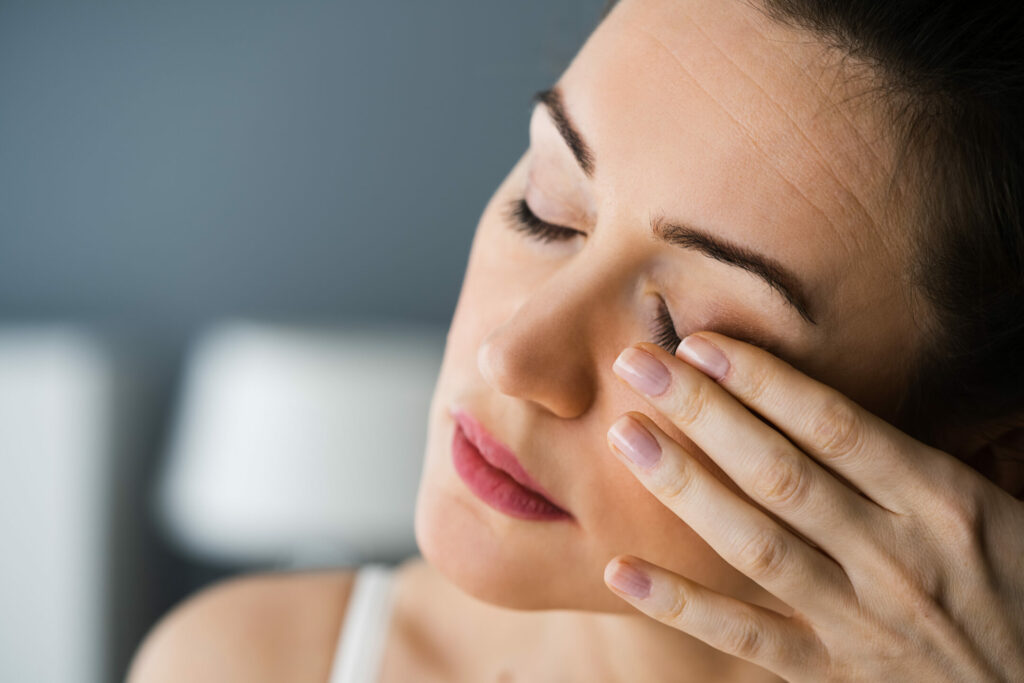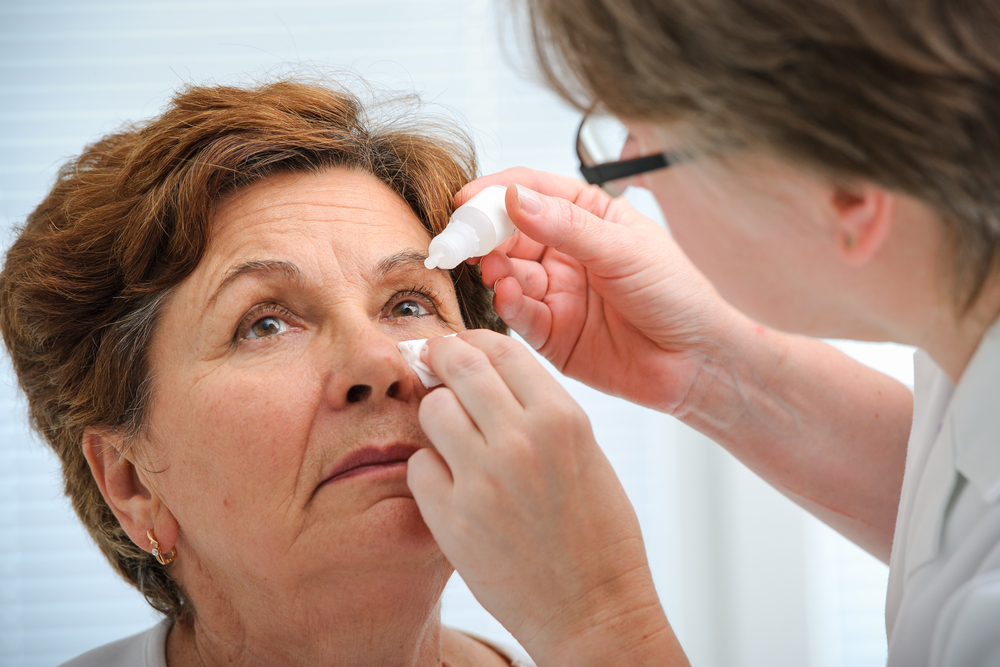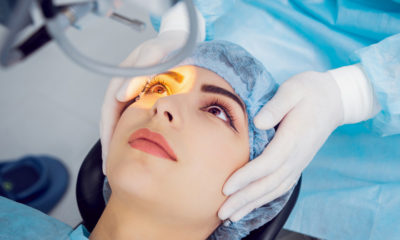Access your own patient portal, provided by NCSH.
Ophthalmology
Why Does My Eye Hurt When I Blink?
Mon, Mar 27, 2023

“Why does my eye hurt when I blink?” If you are wondering about this, you may be surprised to learn that there are many reasons why you could be uncomfortable. Various medical conditions and environmental factors can cause it, and in some cases, it may even be due to eyelid spasms. If you suffer from eye pain when blinking or waking up, read on to discover causes, treatment options, and when to see a doctor.
11 Reasons For Eye Pain When Blinking or Waking Up
Eye pain when blinking or waking up is a common issue that can have many underlying causes. The 11 most frequent reasons are:

- Dry eye disease: With this condition, the eyes don’t produce enough tears, or the tears evaporate too quickly. This can cause irritation, redness, and even pain when blinking. And, if your eyes are dry, they may not produce enough tears to lubricate them while you sleep. More than 16 million Americans suffer from dry eye syndrome. It is often caused by decreased tear production due to aging, certain medications, and environmental factors such as wind or air pollution.
- Eye infections or inflammations: These conditions can be caused by bacteria, viruses, fungi, or other organisms that enter the eye through contact with contaminated surfaces or airborne particles. Symptoms may include redness, itching, swelling, and eye discharge.
- Allergy-Related Irritation and Swelling: Allergens such as dust, pollen, pet dander, and other substances can enter the eyes and trigger an allergic reaction of irritation or swelling that can lead to eye pain when blinking or when you wake up. Symptoms of an allergic reaction may include redness, itching, tearing, and swelling of the eyelids.
- Chalazia: These small, cyst-like bumps form on the eyelids and are caused by blocked oil glands in the eyelid. They can cause pain when you blink due to the pressure of the lump against your eyelid.
- Styes: A stye is an infection of an oil gland in the eyelid that can cause pain when you blink. Symptoms of a stye include redness, swelling, and tenderness around the affected area.
- Sensitivity to light, watery eyes, and excessive tearing/mucus discharge from the eyes: Environmental factors such as dust or smoke, allergies, infections, or an underlying medical condition can cause sensitivity, excessive tearing, and mucus discharge from the eyes. When this happens, blinking can cause friction against the irritated tissue and result in pain.
- Blepharitis: This inflammation of the eyelids is caused by bacteria, allergies, or other skin conditions. When this happens, the eyelids become red and swollen and can feel dry and itchy. This can cause pain when blinking due to irritation of the affected area.
- Foreign Object in the Eye: When dust, dirt, or other small particles become lodged in the eye, they can cause irritation and inflammation of the cornea and surrounding tissue, leading to pain when blinking.
- Glaucoma: This eye condition is characterized by increased pressure on the sensitive nerves around the eye, causing them to become irritated. This can cause pain when blinking. Symptoms include blurred vision, tunnel vision, eye pain, and headaches.
- Eyelid spasms: Blepharospasm is a condition where the eyelids involuntarily close and open rapidly. A wide range of conditions, such as stress, fatigue, dry eyes, or an underlying neurological disorder, can cause this. When this happens, it can cause pain when you blink due to the constant contractions of your eyelids.
- Corneal abrasions: These injuries to the eye’s outermost layer are caused by foreign objects such as dust, dirt, or other small particles. These cuts and scrapes can cause pain when blinking due to irritation of the affected area.
What Should You Do if You Have Eye Pain?
With so many causes of eye pain, it’s important to visit an eye doctor to receive an accurate diagnosis and appropriate treatment. After examining you, your North Carolina Specialty Hospital ophthalmologist may make treatment recommendations for your condition, such as:
- Dry eye: Use artificial tears or other medications to increase tear production.
- Eye infections or inflammation: Use antibiotics or antiviral medications.
- Allergy-related irritation and swelling: Use warm compresses, antihistamines, or other medications to reduce inflammation and relieve symptoms.
- Chalazia: Use warm compresses or antibiotics.
- Styes: Use antibiotics or undergo surgery, depending on the severity.
- Sensitivity to light, watery eyes, and excessive tearing/mucus discharge: Avoid contact with allergens; use a warm compress, artificial tears, or lubricating eye drops; and take antihistamines or other medications if necessary. Wear sunglasses when outdoors to help sensitivity to light and protect eyes from wind and dust.
- Blepharitis: Clean the affected area with warm water and gentle cleansers, or use medicated eye drops to reduce inflammation.
- Foreign object: Seek medical care immediately and do not attempt to remove it yourself.
- Glaucoma: Use medication or undergo surgery to reduce eye pressure to prevent further damage to the optic nerve.
- Eyelid spasms: Use medications or undergo surgery, depending on the severity.
- Corneal abrasions: Clean the area with warm water and gentle cleansers, or use medicated eye drops to reduce inflammation and promote healing.
Where To Go For Eye Pain Help In The Raleigh/Durham Area
If you or a loved one is suffering from eye pain or a bruised feeling in your eye when blinking or waking up, visit one of our eye experts at North Carolina Specialty Hospital for the highest-quality care in the region. Your health has been our priority since 1926, and we’re committed to getting you bright-eyed and pain-free as quickly as possible.
Learn more about our Ophthalmology Department here. Then, request an appointment with an ophthalmologist today by clicking on the eye doctor’s photo and completing the form.
RELATED NEWS

"How Long After Cataract Surgery Can You Bend Over?" and Other Top Cataract Surgery Recovery Questions Answered
Cataract surgery recovery can take a few weeks. Patients must follow certain restrictions during that time related to activity, rubbing the eyes, bending over, and driving. Most patients can be active again in a couple…
Continue Reading

What is an Ophthalmologist?
At North Carolina Specialty Hospital we take pride in offering ophthalmic (eye) surgeries across all age groups using cutting edge technology to treat various eye issues in a caring environ. We offer LenSx® Laser Bladeless…
Continue Reading

Are Floaters in the Eye Dangerous?
All About Eye Floaters and When to See a Specialist Eye floaters can be bothersome and annoying but rarely dangerous. Floaters in the eye are hazardous only if there is a harmful underlying condition or…
Continue Reading
Stay Current
Educational Articles & More
View News & Press